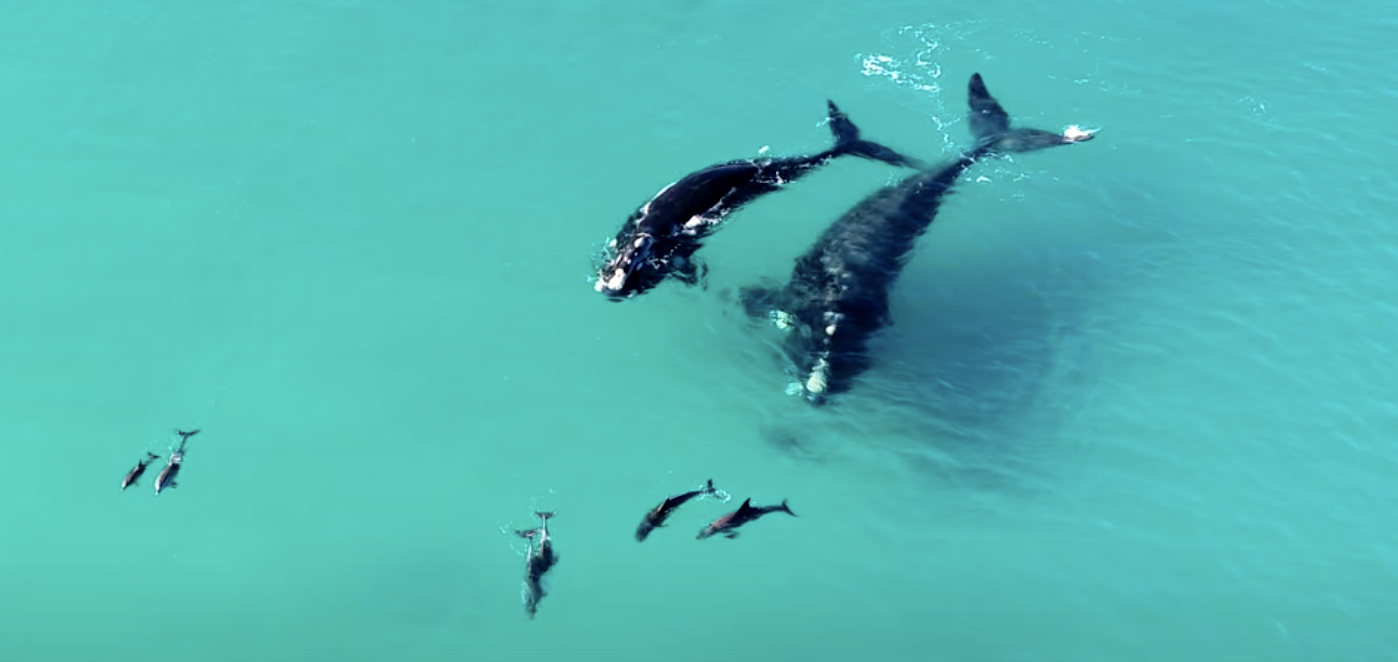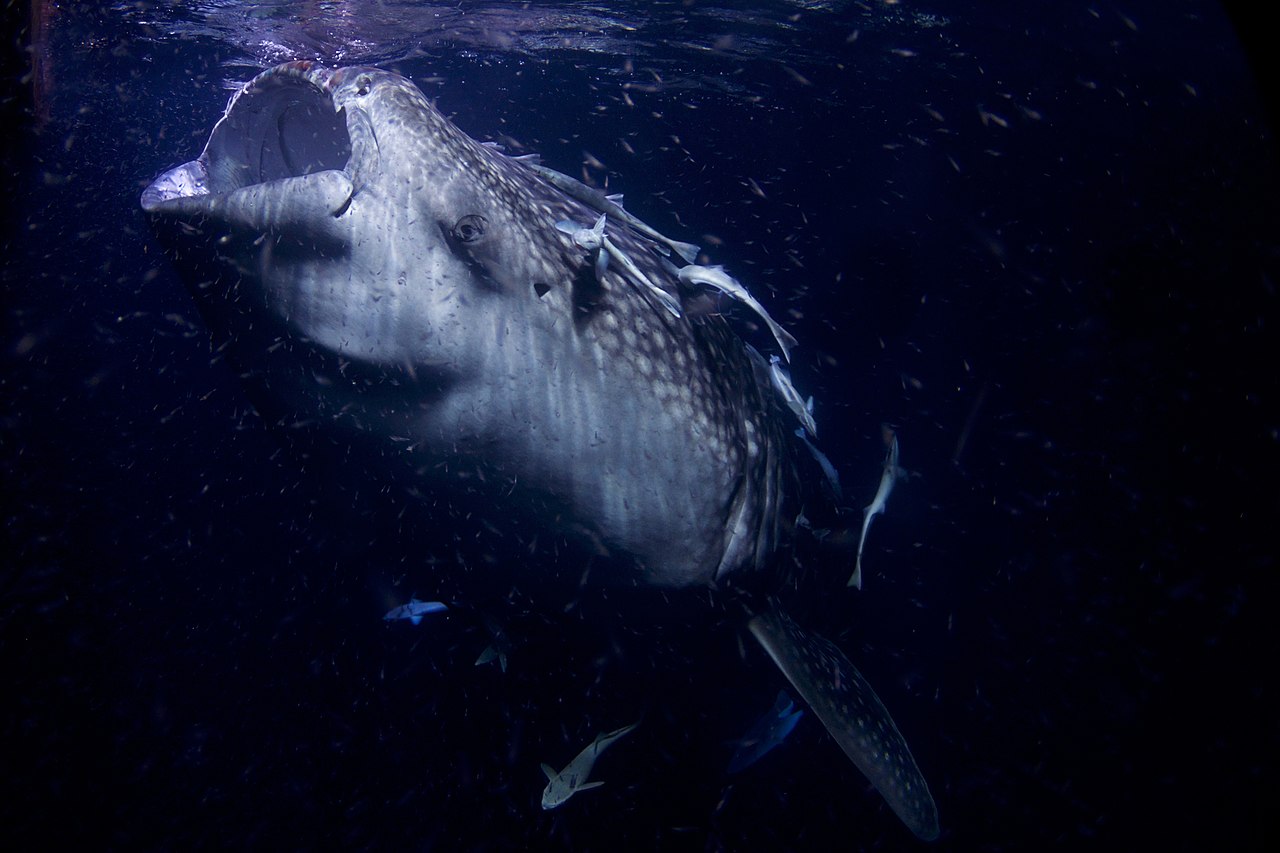When Humpback whales migrate along the Australian coast in their thousands, dolphins join the shoals of their large relatives. This is not an isolated case. In a recent study [1], two researchers from Griffith University in Australia searched social media and found 199 usable reports of encounters between whales and dolphins from 17 countries over a two-decade period, mainly Humpback whales (Megaptera novaeangliae) and Bottlenose dolphins (Tursiops truncatus). In most cases, the interactions can be interpreted as communal feeding, play, and harassment. The researchers conclude that interactions between these species are by no means as rare as previously thought.
(mehr …)Schlagwort: whales
-
Suche:
Übersetzen · Translate
Alle Themen · All topics:
Stichwortliste · Keyword list
animal suffering Animal welfare artisanal fisheries Batäubung Belt-and-Road-Initiative Blauhai Bosporus bottom trawl bycatch Canada Catch Welfare Plattform certification CFFA CAPE Chancay Chile China Containerhafen Don Staniford Erderwärmung escapes EU Europa Exclusive Economic Zone EEC fair-fish fair-fish database Faroe Fischereiabkommen Fischereisubventionen Fischmehl Fischöl fisheries agreements fisheries management FishEthoGroup fish meal fish oil Fish stocks Fish welfare Gesellschaft Greenpeace Humpback whale ICES ICSF Intelligenz International maritime law Invertebraten Kognition Korruption labels Lachs Lachszucht Litopenaeus vannamei Marine Protected Areas (MPA) migration mortality Mycroprotein Nervensystem North-east Atlantic Oceana Oktopoden Omega-3 Ostsee Pacific whiteleg shrimp Pakistan Panamakanal Parasiten Peru Philippines phytoplankton play Pole and line Polen Rainer Froese Raumfahrt Ray Hilborn Reducing animal suffering Salmon Sandtigerhai Schifffahrt Schottland sea lice Seawater Cube Senegal Slapp small-scale fisheries small scale fisheries stocking density Tierleid Tierschutz Tintenfische UK US Navy Venezuela Westafrika whales Whale shark Wirbellose WTO Zivilisation Zooplankton Überfischung
Artikelarchiv · Articles by date
-
Ocean life on Earth and elsewhere
Whales filter seawater to feed on krill, tiny zooplanktonic crustaceans. When the whales were decimated, it was assumed that the krill population would flourish, but in contrast, their population declined at the same time. A recent study by the University of Washington [1] found that whale excrement contains a significant amount of iron and non-toxic copper, both essential but scarce nutrients for phytoplankton, which in turn is the food source of krill. In other words, whales have always provided the basis for their own prey and that of many other marine animals. The critical role that whales play in the complex marine food web was jeopardised by industrial whaling.
On other places in space, there could also be life in the oceans, but it would not be easy to detect . A study at the University of Reading [2] suggests that the physics of alien oceans could prevent deep-sea life from reaching the surface for us to see. In the case of a moon of Saturn, its ocean forms layers that are so distinct that they slow the upward movement of material from the seabed. The absence of tangible biological signatures on the surface does not therefore mean that there is no life in an alien deep sea. Whether this is good news for billionaires exploring extraterrestrial havens is another question; for those who remain on Earth and depend on healthy oceans, the international ban on whaling is a glimmer of hope and should be defended against the greed of some nations.
PS: In Humpback whale songs, researches recently detected ‚the same statistical structure as human language‘. The assumption that language ability is reserved for Homo sapiens is obviously anthropocentric, professor Chomsky.
Title picture:
A Whale shark (Rhincodon typus) filter-feeding plankton at night (credit: Arturo de Frias Marques / Wikimedia Commons)References:
[1] ‚Whale poop contains iron that may have helped fertilize past oceans‘, ScienceDaily, 06.02.2025
[2] ‚Alien ocean could hide signs of life from spacecraft‘, ScienceDaily, 06.02.2025
[3] ‚Humpback whale songs are structured like human language‘, Sience.org, 06.02.2025
Suche:
Übersetzen · Translate
Alle Themen · All topics:
Stichwortliste · Keyword list
animal suffering Animal welfare artisanal fisheries Batäubung Belt-and-Road-Initiative Blauhai Bosporus bottom trawl bycatch Canada Catch Welfare Plattform certification CFFA CAPE Chancay Chile China Containerhafen Don Staniford Erderwärmung escapes EU Europa Exclusive Economic Zone EEC fair-fish fair-fish database Faroe Fischereiabkommen Fischereisubventionen Fischmehl Fischöl fisheries agreements fisheries management FishEthoGroup fish meal fish oil Fish stocks Fish welfare Gesellschaft Greenpeace Humpback whale ICES ICSF Intelligenz International maritime law Invertebraten Kognition Korruption labels Lachs Lachszucht Litopenaeus vannamei Marine Protected Areas (MPA) migration mortality Mycroprotein Nervensystem North-east Atlantic Oceana Oktopoden Omega-3 Ostsee Pacific whiteleg shrimp Pakistan Panamakanal Parasiten Peru Philippines phytoplankton play Pole and line Polen Rainer Froese Raumfahrt Ray Hilborn Reducing animal suffering Salmon Sandtigerhai Schifffahrt Schottland sea lice Seawater Cube Senegal Slapp small-scale fisheries small scale fisheries stocking density Tierleid Tierschutz Tintenfische UK US Navy Venezuela Westafrika whales Whale shark Wirbellose WTO Zivilisation Zooplankton Überfischung
Artikelarchiv · Articles by date


